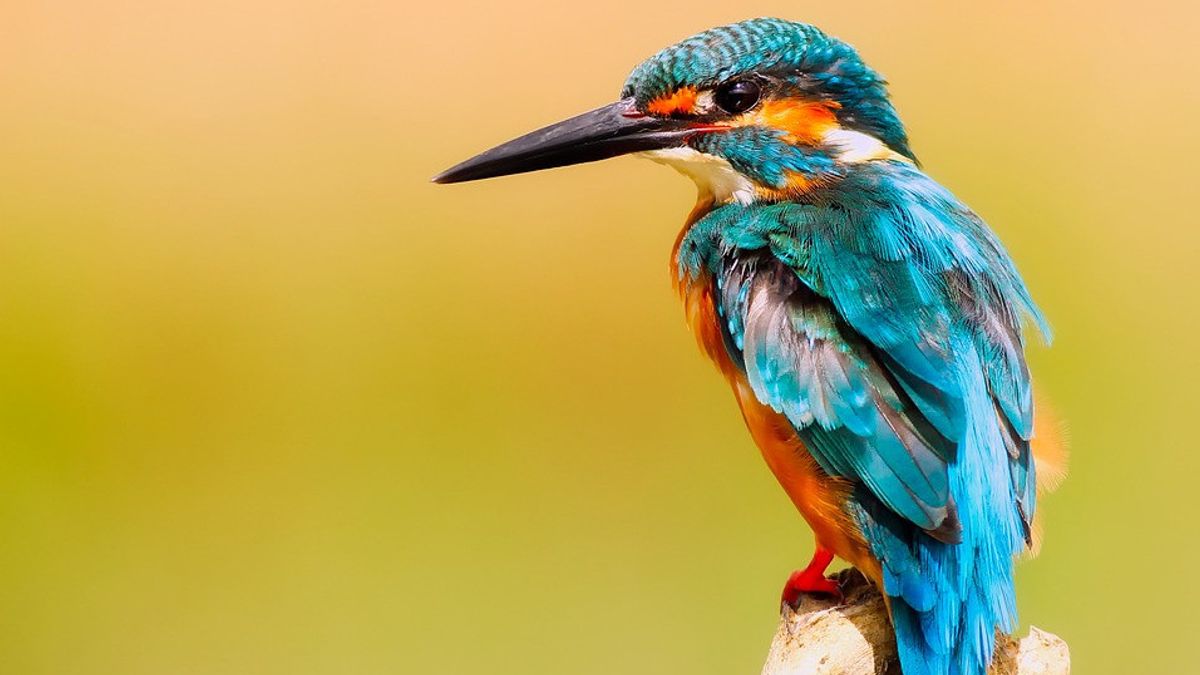JAKARTA – One of the theories of Charles Darwin, the great scientist who presented the theory of evolution, is now believed to be true. For example, the theory that birds living near the equator have more beautiful colors than birds living in polar areas.
Two centuries after Charles Darwin put forward the theory, a new study has finally shown that birds living near the equator are indeed much more colorful.
Scientists have used artificial intelligence (AI) to identify the number of colors in photographs of more than 24,000 preserved birds from the collection of the Natural History Museum.
Scientists with current technology found that tropical birds living near the equator were about 30 percent more colorful than non-tropical birds living near the poles. They just don't know exactly why this happened.
"The long-held theory, first put forward by Charles Darwin and other naturalists in the 18th and 19th centuries, has not been proven until now," the experts said, as quoted by the Daily Mail. The research was led by Dr Chris Cooney and Dr Gavin Thomas from the University of Sheffield's School of Biosciences.
"This work reveals the broad pattern that bird species tend to be 30 percent more colorful towards the equator and identifies several general explanations for why this pattern might be," said Dr Cooney.
"This is exciting because it helps us to better understand the factors that drive and sustain biodiversity on a global scale," he added.
"However, these broad-scale associations with species habitats and dietary differences can only tell us much and much more remains to be learned about the precise ecological and evolutionary factors driving color enhancement in tropical species," he said.
Eighteenth- and nineteenth-century European naturalists such as Darwin, Alexander von Humboldt and Alfred Russel Wallace (a colleague of Darwin's) all commented on the 'rich diversity' and 'mix of colours' they encountered during their travels in the tropics.
For example, von Humboldt wrote that 'the closer we approach the tropics, the greater the increase in diversity of structure, grace of form, and mixture of colours, as well as in eternal youth and the power of organic life'.
Explicit quotations from Darwin about the pattern are few but in 'A Naturalist's Voyage Round the World' (1913) he comments on 'the usual striking coloring of intertropical production'.
However, it has not been possible to substantiate these early observations until now, as the vast amount of data and advanced imaging technology required to examine these patterns on a global scale, does not yet exist.
To prove the theory once and for all, the researchers photographed 24,345 individual birds from 4,527 species in different positions and under different types of light.
All species are 'passerine' birds – perching birds such as sparrows, songbirds and finches.
They were taken from the collection of the Natural History Museum in Tring, Hertfordshire, which has specimens of more than 95 percent of the world's living bird species.
The team identified feather color at 1,500 individual points on each specimen by extracting information from photo pixels, using DeepLabv3, a neural network.
This then allowed the researchers to extract the total number of 'color loci' per specimen as an intuitive color metric.
For example, a male sparrow (Passer domesticus) with simple browns and grays will have a low color locus score. While the Amazonian paradise tanager (Tangara chilensis) with various colors will have a high score.
They found a significant negative correlation between mean color locus scores and latitude midpoints indicating color loci were slightly farther from the equator.
"The team also found large differences between the sexes," Dr Cooney told MailOnline.
"Latitude gradients in colors are stronger for women's colors than for men's colors," he says. "In other words, women seem to show a more pronounced increase in color towards the equator than men."
However, not all birds follow these rules. There is one exception and that is the North American painted bunny (Passerina characteristic), which gets its name from its striking range of blue, green, yellow and red hues.
It's not entirely clear why tropical birds are more colorful. However, the findings suggest that dietary differences between tropical and non-tropical species, as well as the influence of their habitat, may play a key role.
The findings provide insight into how biodiversity is distributed across the planet, and will allow researchers to pinpoint bird color 'hotspots' and become more aware of what could be lost if bird species and their habitats are not effectively conserved.
The research, which also involved researchers at the University of Bath and the University of Pannonia in Hungary, has been published in Nature Ecology & Evolution.
An accompanying related article, published by José Alexandre Felizola Diniz-Filho at the Federal University of Goiás, Brazil, who was not involved in the study, has also been published in the same journal.
The English, Chinese, Japanese, Arabic, and French versions are automatically generated by the AI. So there may still be inaccuracies in translating, please always see Indonesian as our main language. (system supported by DigitalSiber.id)








